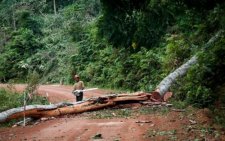Sectors
Article by Grace Heusner, Yale Law School ’16 (Posted: November 24, 2014)
The Mbenjele Look for Answers
In the mid-2000s, the Mbendjele Yaka pygmies of northern Brazzaville-Congo faced a problem. Environmental conservation groups were accusing them of widespread poaching of elephants, gorillas, and other bushmeat. While the Mbendjele did engage in subsistence hunting, they suspected that larger organizations were responsible for the majority of poaching. Yet they had no way to prove it. The Mbendjele were largely illiterate and had only limited ways of communicating with the outside world. While the group previously had success with icon-based applications to battle illegal logging in their forests, the Mbendjele now needed something more versatile. Searching for answers, they approached, Dr. Jerome Lewis, a University College London researcher who had been working with pygmies in the Congo for many years.
The Development of Sapelli
This need prompted Dr. Lewis to develop Sapelli with his organization, Extreme Citizen Science (“ExCiteS”). Sapelli is an icon-based mobile phone application that can be used to record GPS coordinates. Users select appropriate icons that describe an action or occurrence and plot its specific location. The Mbendjele used the app to record evidence of illegal poaching. Because Sapelli is open source, it can be customized for a variety of scenarios.
View the rest of the story here: http://epi.yale.edu/the-metric/mapping-indigenous-natural-resources-theres-app
